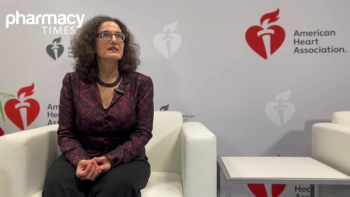While inflation is a key issue for policy makers, much of it can be attributed to economic overstimulation, commodity prices, worker shortages, or supply-chain disruptions. One major area of cost increases that cannot be managed—by monetary policy tools such as interest rate hikes—is drugflation.
Drugflation refers to a point-in-time measure of the rising cost of pharmacy benefits that many US employers fund to cover their employees and families. Containing these costs means hundreds of millions—if not billions—of dollars in potential savings across thousands of self-insured employers who make up the backbone of the US economy.
According to McKinsey, health-cost inflation is projected to rise 7.1% annually from 2022 to 2027, with prescription costs as the fastest-rising component.1 Drugflation is slated to outpace that projection and accounted for an 8.4% increase in 2022 alone.2 Unbridled drugflation races through our economy unchecked, taking its toll on corporate bottom lines—and household budgets—both of which suffer when employers are forced to increase employee cost-share via higher premiums, copays, and deductibles.
Five compounding factors have created a perfect storm to drive drugflation:
- Steep price increases for existing brand-name medications,
- New chronic-condition indications for some high-cost prescription drugs such as the obesity indication for GLP-1 agonists (a recent Reuters analysis noted the median annual list price for a drug increased 67% from $180,000 in 2021 to $300,000 in 2023),3
- A pipeline of expensive specialty medications to treat rare diseases,
- The subsequent increase in stop-loss premium rates and the use of tools such as “lasers” to limit coverage of a specific, high-priced claim under a plan to 1 year,4
- And unfavorable economics for all but the largest employers and health plans.
Steps such as the ongoing Medicare negotiations to address the unaffordable prices of large-volume medicines can make some difference, though they feed into a slow, tip-of-the-iceberg approach. Far more fundamental is the need to address the inner workings of the pharmaceutical financial ecosystem itself as it applies to the procurement and management of employer-sponsored benefit plans.
At the heart of that ecosystem are pharmacy benefit managers (PBMs). Controlling some 80% of prescription claim volume in the US, the “Big 3” PBMs (CVS Caremark, Express Scripts, and OptumRx) play a vital role in cost containment, leveraging their mass purchasing power to negotiate lower costs from drug manufacturers and wholesalers.5 However, these Fortune 10 and top-tier Fortune 500 companies logically extend their best rates, rebates, and contract terms to the nation’s largest and most sophisticated employers and health plans. Conversely, most self-funded small and mid-market employers are doubly disadvantaged, based both on their size relative to the dominant PBMs’ core customers and their lack of expertise negotiating the complex, constantly changing and sometimes intentionally opaque pharmacy-benefit contracting process.
About the Author
Wendy Barnes is CEO of RxBenefits, the first and leading pharmacy benefit optimizer (PBO) in the country. Prior to RxBenefits , she served as president of Express Scripts Pharmacy on behalf of 100 million beneficiaries. She has more than 30 years of healthcare management experience.
Selective application of the PBM’s utilization-management programs also means that small and mid-sized employers may waste as much as 7% to 10% of their annual plan spend on medically unnecessary or inappropriately prescribed medications. All too often, their plan cost is significantly higher at year's end than they anticipated.6
While no silver bullet can tame drugflation, a pharmacy benefit optimizer (PBO) with a business model built around 3 core practices—aggregated purchasing power, PBM-independent clinical management, and pharmacy-specific stop-loss insurance protection against catastrophic specialty drug claims—has shown demonstrable success. Aggregating multipleself-funded employers’ membership levels the playing field by giving them access to Fortune 10-level purchasing power irrespective of size. By tapping into this mass-purchasing power, employers can secure a highly competitive and transparent PBM contract that has been shown to reduce benefit costs by 20% to 28% or more in the first year of implementation.6
Providing independent clinical management with the goal of achieving better health outcomes at a lower net cost also benefits employers and members. This is not a say no exercise; it is a stay smart strategy that has been shown to achieve an additional 5% to 7% annual savings and improve member health and safety.7
Obtaining pharmacy-specific stop-loss insurance protection averts the specialty-pharmacy budget busters that—unlike acute medical events—are often associated with recurring catastrophic costs over several years, sometimes a lifetime. This kind of coverage mitigates claimants exhausting their annual benefits budgets by covering up to $1 million per condition per member annually with a lifetime cap of $3 million.
Taming drugflation through the PBO toolbox would hold enormous benefit for our economy overall. Today, 200,000 US middle market employers spend more than $720 billion on pharmacy benefits annually.8 Reduce this by a conservative 20% and we free up more than $140 billion to be spent on other priorities—or saved.
Today, pharmacy-benefit optimizing tools are relatively new to the marketplace, but their disruptive approach works to tame drugflation and should become the norm.
References
- Fleron A, Singhal S. The gathering storm: The uncertain future of US healthcare. McKinsey & Company. September 16, 2022. Accessed July 18, 2024.https://www.mckinsey.com/industries/healthcare/our-insights/the-gathering-storm-the-uncertain-future-of-us-healthcare
- NHE Fact Sheet. CMS. Accessed July 18, 2024. https://www.cms.gov/data-research/statistics-trends-and-reports/national-health-expenditure-data/nhe-fact-sheet
- Prices for new US drugs rose 35% in 2023, more than the previous year. Reuters. February 23, 2024. Accessed July 18, 2024. https://www.reuters.com/business/healthcare-pharmaceuticals/prices-new-us-drugs-rose-35-2023-more-than-previous-year-2024-02-23/
- Financial CBSL. Health Care Self-Funding and Stop-Loss: Small Employers Balancing Risks and Rewards. SHRM. Accessed July 18, 2024. https://www.shrm.org/topics-tools/news/benefits-compensation/health-care-self-funding-stop-loss-small-employers-balancing-risks-rewards. Published December 21, 2023.
- U.S. Federal Trade Commission, Office of Policy Planning. Pharmacy Benefit Managers: The Powerful Middlemen Inflating Drug Costs and Squeezing Main Street Pharmacies. 2024. Accessed July 18, 2024. https://www.ftc.gov/system/files/ftc_gov/pdf/pharmacy-benefit-managers-staff-report.pdf
- RxBenefits. Pharmacy Benefits Drug Inflation Tracker. March 17, 2024. Accessed July 18, 2024. https://www.rxbenefits.com/pharmacy-benefits-inflation-tracker/
- RXBenefits Protect – RXBenefits. RxBenefits. February 14, 2024. Accessed July 18, 2024. https://www.rxbenefits.com/solutions/rxbenefits-protect/
- Tichy EM, Hoffman JM, Tadrous M, et al. National trends in prescription drug expenditures and projections for 2024. American Journal of Health-system Pharmacy. April 24, 2024. doi:10.1093/ajhp/zxae105

















































































































































































































